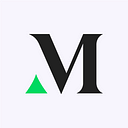Member-only story
How Yeti Survived a Pandemic — and Private Equity
Inside our wacky economy where a company selling $300 coolers can cruise through a recession
On a frigid Chicago afternoon last November, Sue Roth was walking her dog near a three-way intersection in Wicker Park, reminiscing about the Double Door. In its ’90s heyday, the smoky dive bar and music venue had hosted bands like Urge Overkill and Smashing Pumpkins; Roth, now 46, had even performed there in her twenties. A few years ago, her neighborhood, dotted with Old Style beer signs and drooping wooden back porches, began getting overrun with stores like Lululemon and Diptyque. Late last year — two years after the Double Door had been evicted from its location when a developer purchased it — another bougie store appeared in its place. Roth shook her head about the famous dive bar’s strange fate. “To have it replaced with this elitist thermos company is really quite bizarre,” she says.
The thermos company in question? Yeti, the Austin, Texas-based brand known for catapulting a lowly, utilitarian product — the portable cooler — into a full-blown premium brand. Today a basic plastic Coleman cooler at Target costs $25; a similarly sized Yeti is $300. As the well-tread company lore goes, the original Yeti cooler was first hatched by Ryan and Roy Seiders, two fishermen brothers…

